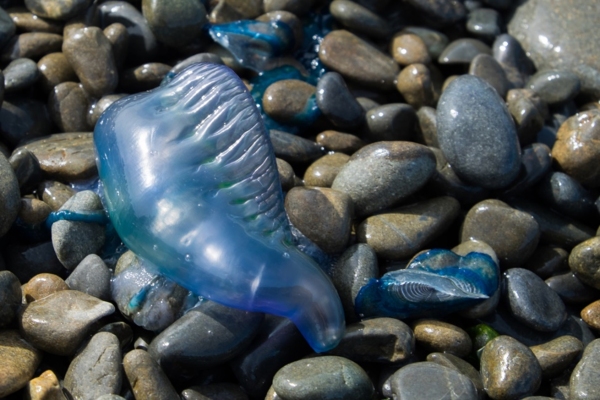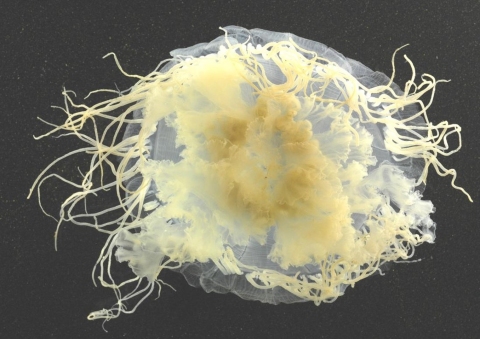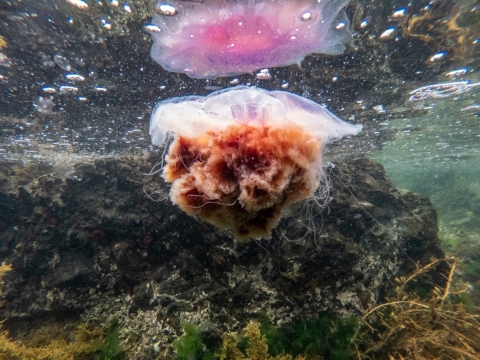NIWA emeritus researcher and jellyfish expert Dr Dennis Gordon says it is common to start seeing more jellyfish at the beach at this time of year.
"As soon as the days start to get longer and there's more daylight, you get a bloom of more plankton. When there is more plant plankton, there's more animal plankton, which means you get more shrimps and things – and jellyfish feed on those small crustaceans,” he says.
Jellyfish stay near the surface as they follow food supplies. Yet, with weak directional powers, many unlucky jellies find themselves gathered into dense groups and stranded on our beaches.
Large numbers of bluebottle jellyfish were reported on several of Auckland’s west coast beaches recently. Also called Portuguese man o’ war, they are only distantly related to true jellyfish. "The wind steers the majestic creatures onto the shore because they are light and have a gas-filled float,” Dr Gordon says.
Around 35 species of jellyfish are found in New Zealand waters. The three species most frequently seen on New Zealand beaches are moon jellyfish, lion’s mane and spotted jellyfish.
Moon jellyfish (Aurelia sp.) have a bell-shaped whitish body, about 25-40cm across, and have a fringe of short tentacles around the margin of the bell. Lion’s mane (Cyanea rosea) is New Zealand’s biggest species of jellyfish, growing up to an impressive two and a half metres in diameter and with tentacles of up to 36 metres in length. Spotted Jellyfish (Desmonema gaudichaudi) are dome-shaped with reddish-brown polka dots on the body.
If you come across a jellyfish this summer, Dr Gordon advises care. “Despite being really beautiful, the lion’s mane and spotted jellyfish can produce a very painful sting, as can the bluebottle.”
Stinging is caused by the thousands of microscopic stinger capsules (nematocysts) located on the surface of the tentacles. Upon contact, the nematocysts simultaneously discharge their venom, delivering a nasty sting – so it is best not to touch the tentacles. It is safe to touch the top of the bell.
If you see a jellyfish next to you in the water, the chances are you can out-swim it. "Those who do plan on getting in the water should be cautious and wear a wetsuit if it is known that there may be jellyfish in the area,” he says.
Common symptoms of a jellyfish sting include a burning sensation on your skin, a tingling or numbness where the sting occurred, and the sting area turning purple or red.
Most stings in New Zealand waters are not serious, however, the treatment of stings is exactly the same regardless of the type of jellyfish involved.
First, flush the sting area with seawater to remove the tentacles. Use a dry towel to remove the remaining tentacles. Then, immerse the stung area in hot (but comfortable) water for 15 to 20 minutes. Use pain relief or antihistamines if needed.
Using urine to relieve a jellyfish sting is a popular misconception. As there is no way of telling its pH and chemical makeup, it could actually make the pain worse.
“Jellyfish are enchanting, delicate creatures that should be appreciated, just not too close,” says Dr Gordon.




